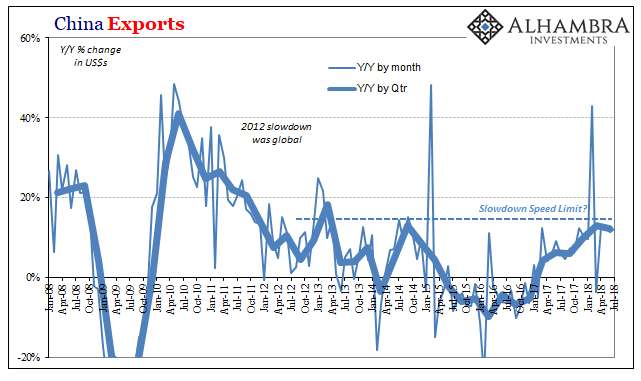 Bitcoin’s origin can be traced back to September 15, 2008. This is the day the investment bank Lehman Brothers announced its bankruptcy and the financial crisis reached its peak. With the bankruptcy of Lehman Brothers a ripple effect set in, several other banks had to be saved by their patrons, the states. These bail-outs wreaked havoc on the debt of many countries, which is why central banks initiated their massive government bond purchase programs. Even today, the balance sheets of the major central banks are still massively inflated and although central banks have begun to tighten, it is still not clear whether they will ever be able to siphon off the liquidity without major problems.
Bitcoin’s origin can be traced back to September 15, 2008. This is the day the investment bank Lehman Brothers announced its bankruptcy and the financial crisis reached its peak. With the bankruptcy of Lehman Brothers a ripple effect set in, several other banks had to be saved by their patrons, the states. These bail-outs wreaked havoc on the debt of many countries, which is why central banks initiated their massive government bond purchase programs. Even today, the balance sheets of the major central banks are still massively inflated and although central banks have begun to tighten, it is still not clear whether they will ever be able to siphon off the liquidity without major problems.
Only a month after the crisis reached its climax on 31st of October 2008, several hundred members of an obscure cryptography expert’s e-mail list received a message by a certain Satoshi Nakamoto. “For some time now I have been working on an electronic payment system that is completely peer-to-peer and does not require a trustworthy third party,” writes the unknown sender. His email contains a link to a white paper uploaded to a registered website. The nine-page paper describes a payment system called Bitcoin. Its specific unique selling point: The Bitcoin network is based on a database that is distributed simultaneously across countless computers and is updated every ten minutes. Due to this non-centricity, the Bitcoin network has no central server and no authority, which ensures proper accounting of all the value exchanges within the system.
Such ideas were by no means new to the addressed cryptography freaks and computer scientists. Even before the turn of the millennium, a wide variety of such approaches existed, all of which, however, had failed. The reason: none of the projects was able to solve the so-called “double-spending” problem, whereby someone within the system must ensure that the same transactions are not executed twice and thus no monetary units are created out of nothing. So it comes as no surprise that Bitcoin was also met with little euphoria at first. Why should this system of all things be fundamentally better and able to solve the problem of “double spending”?
How does Bitcoin work?
Bitcoin relies on individual network participants, more precisely the “full nodes”. These stand for all those, who download a complete copy of the database shared with all other “full nodes”. Due to the open source nature of the Bitcoin software, anyone can join the system. Since the full nodes know about the current accounting status at all times, they check that no transaction is executed twice.
But what do they orientate themselves by? How can they know whether a transaction has been executed or whether one monetary unit has already been issued? To do this, they compare each new transaction with all the transactions within the database. This is where the Bitcoin system records all transactions ever executed. But that’s not all. The individual transactions are combined into a block. Each block has a unique hash that can be compared to a unique fingerprint. Or to put it differently: This is a type of identification number that references the previous block. In this way, the individual blocks are chronologically connected to each other via the respective identification numbers to form a chain, the blockchain, and can be traced back to the Genesis block, the very first block and its original transactions. This creates a transparent transaction history that no one can change without leaving traces. If a block experiences even the smallest change, its identification number changes as well, with the consequence that this creates an inconsistency with the next block’s identification number.
So how are new blocks added to the existing chain and who ensures that they only contain unexecuted transactions to avoid double-spending? This is where the so-called bitcoin miners come in. In a competition to add the newest block to the blockchain, each miner tries to create a new block as quickly as possible using their own computing power. About every ten minutes, a miner manages to create a block whose total content meets the requirements of the bitcoin algorithm. As a reward, this miner gets new Bitcoin.
A simplistic picture may help here: Rolling the dice, the miner who first rolled a six for each factor on a ten-digit number wins the race, provided the block contains only transactions that have not yet been executed. The miners check their results mutually and thus ensure that only valid blocks are integrated into the blockchain. While finding a valid block is highly competitive and difficult, the subsequent verification process is trivial. As soon as a block has been verified, the miners dedicate themselves to the next block and try their luck again.
No Rulers, no Leader: «In Code we Trust»
It is this sophisticated, software-programmed incentive system that sets Bitcoin apart from its predecessors. As the trials before Bitcoin have shown, a non-centralized computer network for peer-to-peer value transfer can hardly function without such an incentive system. Because software code is not chiseled into stone and can theoretically be changed and thus sabotaged — so can the Bitcoin Programming Code. However, the bitcoin ecosystem consists of several main groups with different interests: Miners, core developers, users, shops and businesses. All of these groups have different, sometimes even opposing interests. For example, users and companies want lower transaction fees, while the miners who receive them tend to plead for higher transaction fees. Due to these different interests, changes within the system are difficult to implement. Whenever a group wants to advance the bitcoin source code in one direction and this change does not fit another group, they can flirt with a fork. This would create of a new version of Bitcoin (as happened with Bitcoin Cash on August 1, 2017), meaning that the Bitcoin network splits apart. Ultimately, however, countless divisions are not in the interest of these individual groups within the original Bitcoin network, as this would further dilute their common ecosystem. The vast majority of forks are therefore hardly successful — a sign that the antagonistic groups within the bitcoin network attempt to come to terms with each other.
Outsiders perceive this non-centricity and the different interests within the Bitcoin system primarily as a hindrance that makes the ecosystem difficult to reform. For many Bitcoin enthusiasts, however, it is much more of a feature than a bug, as its non-centricity promises consistency and resilience. The same argument of slowness is often put forward against Switzerland and its semi-direct form of democracy. However, the decentralized nature of government and the right to a say via initiatives and referendums are also seen more as an advantage by the Swiss.
Mythical act of creation
Admittedly: The desire for an overarching authority, the benevolent dictator, appears human. In times of uncertainty, many people feel the need for such an entity, which has the power to solve conflicts. There is no such thing with Bitcoin. The Bitcoin ecosystem also has its figureheads and masterminds. However, these are distributed across all main and interest groups. Most likely a statement by Satoshi Nakamoto would have a strong weight. But he has not spoken since April 2011 and nobody knows who’s behind this person.
How could that be? The name Satoshi Nakamoto is just a pseudonym to conceal his true identity. Nakamoto used at least three email addresses, all of which were elaborately encrypted. Today, the wildest conspiracy theories are circulating, according to which Nakamoto’s identity has been clarified. But so far, everyone who has come out as Satoshi is stuck for a proof.
For many Bitcoin disciples, the true identity should remain unresolved forever anyway. For Satoshi Nakamoto is not only the brilliant computer genius behind Bitcoin but the personification of a higher power that has withdrawn from its active role and still lives on in the minds of us humans as a godlike figure. In the beginning, God created the heavens and the earth. And Nakamoto started with the first block of Bitcoin, the Genesis block. The parallels to the creation story of the Bible cannot be overlooked.
In retrospect, this creation myth can be considered brilliant and ultimately reflects Bitcoin’s main concern: Non-centrality. The fact that even the underlying force behind Bitcoin is unknown and has no central position of power underlines the integrity and value proposition of this idea. Especially in the early days of Bitcoin, the system could have been badly shaken or even destroyed by the manipulation or elimination of the founder. Without its own Achilles’ heel, such a thing was much more difficult.
Today Bitcoin is generally criticized for not being as non-centralized as its supporters would like it to be. As a matter of fact, mining is less distributed than one could wish for. In our real, not perfect world, however, one has to see the property of non-centrality as a continuum. Even if Bitcoin does not fulfill the maximum degree of non-centrality formulated in theory, in practice it is still the non-centralist project compared to other existing institutions and structures.
Parts of this article have been published in German: http://www.punktmagazin.ch/wirtschaftliches/das-bitcoin-evangelium/
Are you the author? Previous post See more for Next postTags: newslettersent





































